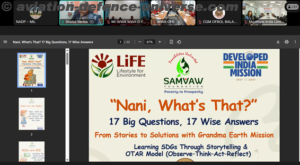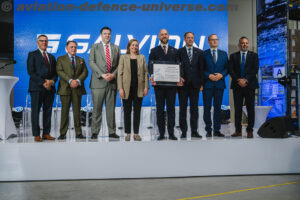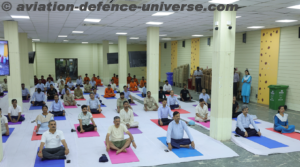- Girls High School exhibits a plaque outside the Peace Park
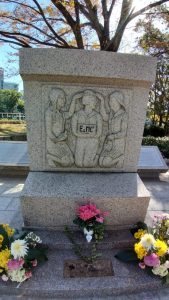
New Delhi. 06 August 2022. Out of all the bombed buildings in Hiroshima one of the lesser known and rarely visited is the Hiroshima Municipal Girls High School. As soon as one crosses the Peace Bridge on the right is the Peace Memorial Park and on the left is a figure of the girl engraved in the center carrying a box carved with the formula for nuclear energy: E=MC2. The formula is taken from Albert Einstein’s Theory of Relativity, the principle behind the atomic bomb. The indirect expression was a way around the occupation army’s prohibition on using the characters for “atomic bombing.”
The Memorial Monument to the Victims of Atomic bomb completed on August 6, 1948 established by bereaved families of Hiroshima Municipal Girl’s High School. All of the 544 first and second year students and 8 teachers of Hiroshima Municipal Girl’s High School who were working on building demolition in the vicinity of the south end of present Peace Memorial Park and Peace Boulevard perished. This area, which is 500 meters from the hypocenter, was in Zaimoku-cho and Kobiki-cho at the time. Including students mobilized at other places in the city, the school lost 679 people, the most of any school in the city. On the back of the monument is engraved, “Rest in peace within this grassy hill. Protected by a wall of friends.” The writer was Masaomi Miyakawa, who was principal at the time.
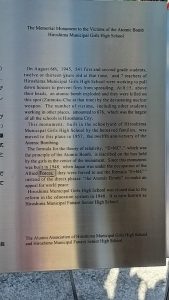
The world feels that Albert Einstein was the father of the atomic bombs which were dropped in 1945 but very few know that he did not work directly on the atom bomb. But Einstein was the father of the bomb in two important ways: 1) it was his initiative which started U.S. bomb research; 2) it was his equation (E = mc2) which made the atomic bomb theoretically possible.
In 1938, three chemists working in a laboratory in Berlin made a discovery that would alter the course of history: they split the uranium atom. The energy released when this splitting, or fission, occurs is tremendous–enough to power a bomb. But before such a weapon could be built, numerous technical problems had to be overcome.
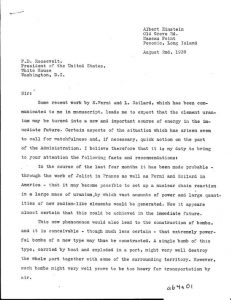
When Einstein learned that the Germans might succeed in solving these problems, he wrote to President Franklin Roosevelt with his concerns. Einstein’s 1939 letter helped initiate the U.S. effort to build an atomic bomb, but work proceeded slowly at first. Two other findings in 1940 and 1941 demonstrated conclusively that the bomb was feasible and made building the bomb a top priority for the United States: the determination of the “critical mass” of uranium needed and the confirmation that plutonium could undergo fission and be used in a bomb. In December 1941, the government launched the Manhattan Project, the scientific and military undertaking to develop the bomb.
But the war in Europe finished before the attacks on Hiroshima and Nagasaki and Einstein realised that he had probably presumed a little too much. In November 1954, five months before his death, Einstein summarized his feelings about his role in the creation of the atomic bomb: “I made one great mistake in my life… when I signed the letter to President Roosevelt recommending that atom bombs be made; but there was some justification – the danger that the Germans would make them.”







































